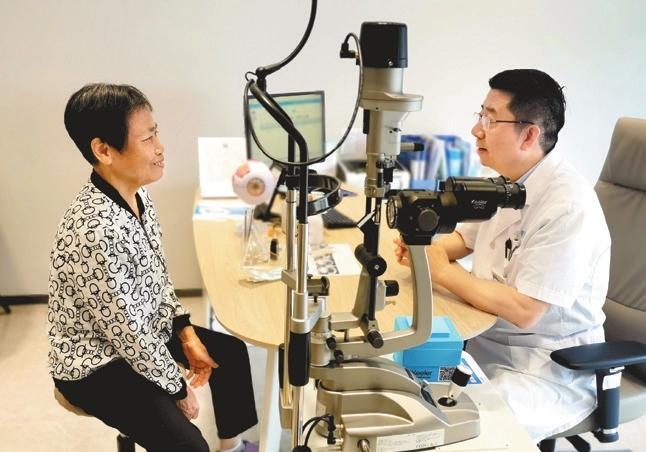
Debra Li debra_lidan@163.com AROUND 200 guests and members of local communities witnessed the official launch of a public benefit eye care project at Shenzhen Bright Eye Hospital in Nanshan District yesterday, which promises to restore and improve vision for those who are disadvantaged in Shenzhen. Initiated by the Guangdong Foundation for Disabled Persons and undertaken by the local opthmalogy hospital, the project will subsidize timely treatment for 330 eye patients each year. Liu Hongshan, a corneal disease specialist and head of Shenzhen Bright Eye Hospital (also known as “Purui” in pinyin), revealed that the project particularly takes care of senior citizens who migrated to Shenzhen to live with their families. “Those without Shenzhen hukou, or household registration, can also benefit from the project, as we have discussed it with the Guangdong Foundation for Disabled Persons and concluded that the project should cover migrant seniors in order to help those who are truly in need,” Liu explained. One of first beneficiaries of the project is Xu Xichun, a woman in her 70s who migrated from a rural area in Chaoshan, eastern Guangdong Province, to live with her children in Bao’an District. “I first sought help for my cataracts, but then the doctors also found that I had retinal detachment in one eye,” Xu said, adding that if left untreated, the retinal problem could lead to blindness. After learning that the migrant family lives on a tight budget, the hospital helped Xu prepare necessary documents and apply for a 1,500-yuan (US$206) subsidy for follow-up treatment. During the ceremony, a senior citizen surnamed Li, who also benefited from the project, shared, “I am full of gratitude for the project, which subsidized my cataract surgery and restored my vision. Doctor Liu Hongshan performed a very successful operation, and now I can see small things like a piece of hair on the floor. It’s just wonderful to be able to see clearly again!” Zhang Yang, executive president of the hospital, said the hospital has a professional team to execute the project, which will subsidize the treatment of cataracts and pterygium (also known as surfer’s eye). Both diseases are more common in older adults, who have had more exposure to the elements over time, and those who live near the equator, where sunlight is more intense. Chen Qiong, vice director of the Guangdong Foundation for Disabled Persons, said the project aims to help people with disabilities and those who are disadvantaged in the province. “Health is a primary concern in people’s wellbeing,” Chen said. “We wish to work with multiple institutions and form a sustainable model to do good. In this particular case, we wish to offer a better life and more opportunities for people with visual impairment.” The hospital has pledged to regularly send professional teams to provide free eye checks in local communities, thereby reaching those in need, and provide subsidies for eligible patients. Occupying 20,000 square meters of space within a 14-story building adjacent to the Taoyuan Metro Station in Nanshan, the hospital provides specialized treatment for ametropia resulting from myopia, hyperopia, astigmatism, cataracts, ocular fundus diseases, and glaucoma. | 
